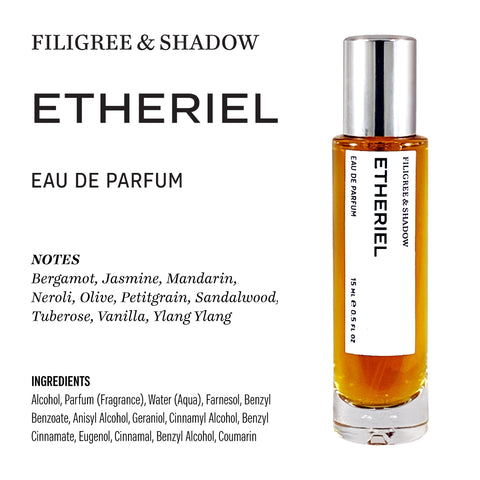
Know Your Natural Perfume
Maybe you’ve always been a little curious about the ingredients listed in your favorite perfume. The term “ingredients” is slightly misleading as you are reading the contents in order from most to least, as opposed to reading a recipe. Let’s take a look at the contents and shed some light on perfume.
The first ingredient is alcohol. Conventional perfumes will use a blended perfumer’s alcohol that contains ethanol and two bitterants (t-Butyl Alcohol and Bitrex) to deter consumption. Some perfumes may also contain isopropyl myristate (an ester to hold everything together), and monopropylene gylcol (a humectant), but generally perfumers stick to the tried-and-true formulation of alcohol and parfum (our next ingredient).
Parfum is the fragrance in its original concentrated form. A conventional parfum may contain a mixture of natural and synthetic materials, whereas a natural perfume will contain essential oils, absolutes, extracts, and sometimes isolates. The parfum to alcohol ratio can dictate the type of perfume you purchase: eau de cologne (5% parfum), eau de toilette (10%), eau de parfum (15%), or parfum extrait (20%).
Water is the third ingredient, however its presence in perfume is generally a result of the alcohol distillation process. For example, 190 proof ethanol is 95% alcohol and 5% water.
Everything that follows water are the fragrance allergens present in the fragrance. It’s a bit like Inception: the fragrance linalool is present in the fragrance lavender. European regulations require perfumes to list any of the 26 common fragrances that can cause allergic reactions.
California goes a step further and requires notifying consumers when a fragrance contains beta-Myrcene due to Prop 65. This compound occurs naturally in cannabis, hops, and thyme. Compliance is mandatory despite California not differentiating between naturally occurring amounts and industrial concentrations. Still, knowledge is power.
Perfume formulas will remain a tightly guarded secret, but everything else is there for you to read. And now you know how to read the ingredients.
Bringing it all together: one of our most popular fragrances, ETHERIEL is inspired by Lush and contains bergamot, jasmine, mandarin, neroli, olive, petitgrain, sandalwood, tuberose, vanilla, and ylang-ylang in organic cane alcohol.
Now here are the perfume ingredients in accordance with European regulations: alcohol, parfum (fragrance), water (aqua), farnesol, benzyl benzoate, anisyl alcohol, geraniol, cinnamyl alcohol, benzyl cinnamate, eugenol, cinnamal, benzyl alcohol, coumarin.
Knowledge is power, so let’s bring transparency to natural perfume. We’ll be publishing the allergens as ingredients for each fragrance on our website so you can make the best informed decisions about what you choose to wear.

Comments (0)
There are no comments for this article. Be the first one to leave a message!